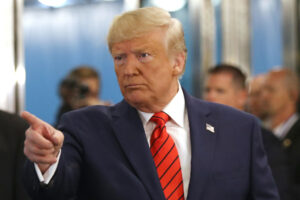No matter how you look at it, getting called in for a job interview is no small feat. After all, you’ve literally beat out hundreds (maybe even thousands) of qualified candidates. You’ve demonstrated that you have what it takes to make it to the next (and hopefully) hiring stage. However, if you really want to ace your interview and impress your interviewers, you’ll need more than incredible qualifications, a firm handshake, the perfect outfit, and a healthy dose of confidence. You’ll also need to know about the law firm, what sets you apart from the competition, how to answer questions confidently, and ask them as well. After all, getting an offer includes all of the above and asking relevant questions that demonstrate your intelligence and desire to work at the firm. Now, before you feel panicky, overwhelmed, and stressed, we’re here to tell you that it is not hard to ask poignant questions and impress your interviewer. In fact, if you take our advice and ask these 11 questions, you’ll avoid the age-old silence and awkwardness that comes when most interviewers ask, “Do you have any questions for us?”
What type of cases and deals are distributed to new associates?
This question displays initiative and demonstrates that you are interested in the firm’s workflow. It demonstrates that you are passionate about the legal field, various areas of law, the complexity of cases, and the level of authority you might be given as an associate. It will also help you decipher the type of cases or transactions that you will be required to handle on a daily basis. Listen carefully to the interviewer’s answers to determine if the work sounds exciting, challenging, or mundane.
What kind of tasks do new associates typically handle?
This is a spin-off question to the previous one and is important because when you’re just starting out, you may have high hopes of arguing and being involved in high-profile cases. However, as a new associate, this may or may not be a realistic expectation, especially if you’ve recently graduated and have little or no practical experience. In fact, many large firms hire new associates so that they can receive on-the-job-training because they understand that they haven’t yet developed the lawyering skills necessary to be a successful attorney. Therefore, many larger firms pair new associates with more experienced ones, and the new associates mostly conduct legal research or writing, and assist in trial preparation and other mundane tasks.
In contrast, when you work with a medium or larger firm, you may have to wear many hats. For instance, you may conduct legal research, write briefs, engage in eDiscovery, and argue cases. By asking detailed questions about what might be expected of you at the particular firm you’re interviewing with, you’ll have a clearer understanding of what will be expected of you. And if you are offered and accept the position, you’ll go in with your eyes wide open and will know firsthand whether this firm is in alignment with your overall goals as to the tasks that you’re comfortable working on.
What makes this firm stand apart from others?
Although you should conduct independent research on the firm to determine the overall work culture, you still want to gather as much information as possible on the culture, benefits, and perks of working here. That is, you want to see how this firm is unique in comparison to others. For instance, does this firm have a reputation for providing its associates with a sound work-life balance? Do they offer an onsite gym or access to an offsite one, private health care, or even pet insurance? By understanding what sets the firm apart, you can decide if it is the best firm for you.
How do you consider the firm will grow in the next five years? What are the biggest hurdles currently facing this firm?
These questions demonstrate your genuine concern about the company’s future. Knowing about the organization’s future plans for projected growth and any hurdles will help you discern their overall stability. It will also help you decipher any problems. Of course, all firms have challenges, both big and small, but if you plan on working for the firm long term, you’ll want to ensure that it is a stable one before you take the position.
Could you explain the firm’s hierarchical structure?
It is important to understand the hierarchical structure of the firm or chain of command. This way, you’ll have a better understanding of the superior and subordinate levels of the firm. For instance, how many partners work at the firm? How many associates? What are the firm’s main practice areas? How are cases distributed amongst associates and partners? By understanding the managerial structure of the firm, you’ll have a better idea of how you might fit in as a newbie, as well as who has the power and how the firm is organized from a leadership standpoint. This knowledge will help you understand how the firm functions and to whom you will have to answer.
Will I frequently work with the same partners or be assigned to cases with different partners?
This question will help you ascertain how casework is distributed, with whom you’ll work, the type of assistance you might receive, and the type of tasks that you might be given. By understanding whether you’ll work with a particular partner or several, you’ll better be able to gauge how your communication style fits.
What type of associate is likely to succeed here?
Although you may get a generalized response from your interviewer, this is a great question to ask. You see, this question provides insider information about the traits, skills, or qualities that the firm values. It helps you determine whether you have those specific traits and what will be expected of you. For instance, if this firm values someone with a strong work ethic who can put in lots of overtime and you’re available to do this, you’ll be more likely to succeed. On the other hand, if you have a family and need to limit your work hours, then working in a firm that doesn’t require such overtime might be best.
How often will my performance be evaluated?
Constructive criticism can help you improve and make you a better attorney. Understanding how criticism is administered and how often you’ll be evaluated and by whom will help you prepare for performance reviews. It will also help you understand the law firm’s overall expectations so you can exceed those expectations.
What has been your experience working here?
Although everyone’s experience is different, it definitely can’t hurt to learn about other people’s experiences while they’re employed at the firm. By asking about the interviewer’s experience, you’ll get an in-depth look at the overall work culture. You’ll be able to determine if it is a creative, task-oriented, cooperative, power-driven, or competitive work environment. You can determine whether your personality and work style will be a good match for the firm.
How did you become interested in your practice area?
Another great question is to ask the interviewer how they became interested in their practice area. This question demonstrates that you are an inquisitive candidate who is interested in the interviewer and other colleagues. By asking questions to get to know others better, you demonstrate that you are a team player and are someone who has exceptional communication skills. The interviewer will feel respected that you want to know more about them. Additionally, this question will help establish rapport and will help you get a feel for the type of associates who work at the firm as well as their likes, dislikes, and interests.
What kinds of nonprofit assignments (if any) does the firm ask associates to handle?
As you know, many bar associations require that lawyers engage in pro bono work or “free legal services for the good of the people.” If you’re someone who wants to meet this requirement or are interested in giving back to the community, you are probably searching for opportunities to engage in pro bono work. One great way to do this is to use your lawyering skills to help others in need. Therefore, finding a law firm that encourages (or, at the very least, supports) your pro bono efforts should be a priority for you. Therefore, if this is important to you, don’t be shy. Ask the interviewer if the firm looks favorably upon pro bono projects. Ask if they encourage associates to do more than 50+ hours of pro bono cases a year. This is important because if they don’t have a pro bono requirement or do not seem to care about this work, and it’s important to you, you may want to seek a firm that is more concerned with serving the community.
In conclusion, acing an interview is more than simply looking fresh and being confident about your skills and qualifications. It is about showing interest in the firm. By asking the right questions, you get insider information about the firm and cleverly demonstrate that you are well suited for the position. You showcase your enthusiasm and personality and do some essential investigative work to determine if the firm is right for you. After all, it’s just as important (maybe even more important) that you feel comfortable working for the firm as they feel comfortable hiring you to work for them.
 Lateral Link is one of the top-rated international legal recruiting firms. With over 14 offices world-wide, Lateral Link specializes in placing attorneys at the most prestigious law firms and companies in the world. Managed by former practicing attorneys from top law schools, Lateral Link has a tradition of hiring lawyers to execute the lateral leaps of practicing attorneys. Click here to find out more about us.
Lateral Link is one of the top-rated international legal recruiting firms. With over 14 offices world-wide, Lateral Link specializes in placing attorneys at the most prestigious law firms and companies in the world. Managed by former practicing attorneys from top law schools, Lateral Link has a tradition of hiring lawyers to execute the lateral leaps of practicing attorneys. Click here to find out more about us.
 Staci Zaretsky is a senior editor at Above the Law, where she’s worked since 2011. She’d love to hear from you, so please feel free to email her with any tips, questions, comments, or critiques. You can follow her on Twitter or connect with her on LinkedIn.
Staci Zaretsky is a senior editor at Above the Law, where she’s worked since 2011. She’d love to hear from you, so please feel free to email her with any tips, questions, comments, or critiques. You can follow her on Twitter or connect with her on LinkedIn.


















 Jordan Rothman is a partner of
Jordan Rothman is a partner of